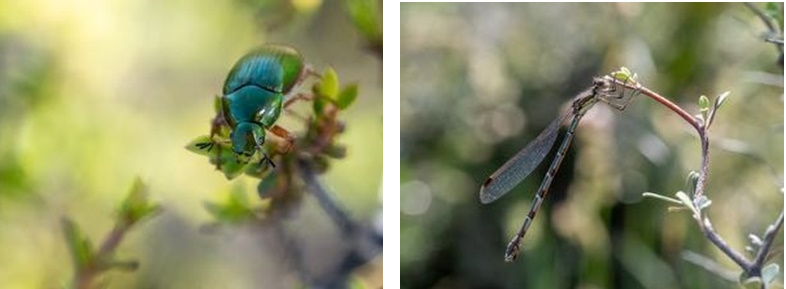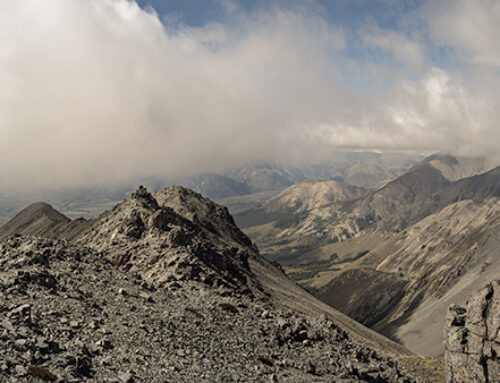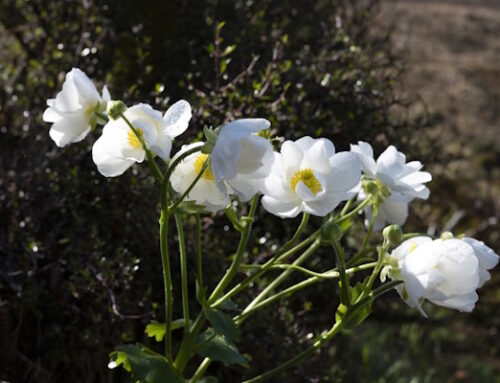An advertisement offering a half-day excursion to find and photograph small beetles, that some parts of New Zealand consider an agricultural pest – with the possibility that there might be few to find – is not necessarily an attractive offer. But, the picture of the iridescent jewel-like beetle that accompanied the Field Trip notice is highly inviting. Despite their small size, just 10mm, the Manuka Chafer Beetle, Pyronota festiva, might be New Zealand’s prettiest beetle. While its colourful relative, the green cockchafer, is much larger, it tends to present in uniform browns and greens that lack the sparkle and pizazz of the smaller Scarab. Like its larger Australian relative, the Christmas Beetle, Manuka Beetle numbers peak in the festive season; between November and February, with most being observed in late December. This small scarab beetle is endemic to New Zealand, and is commonly found in mānuka trees (Leptospermum scoparium) and in pasture and tussock close to native bush with mānuka trees. The Maori called the manuka chafer beetle kerewai or reporepowai because of its habit of getting stuck in muddy stream banks.
A prime location for Manuka Beetles close to Christchurch is the Torlesse Tussocklands Park around Lake Lyndon. James Thompson offered to organise a Field Trip that soon attracted 9 or 10 registrants, that, on the day, swelled to almost double that. Meeting at the turn-off from Highway 73 onto Lyndon Road, those with 4WDs provided a ride for those with conventional vehicles over the 5-10 kms of gravel road to a small wood of mānuka trees overlooking the Acheron River.
Despite being perfect weather, it seems the variability of weather over the previous weeks had delayed the manuka flowering, reducing the number of beetles. Nevertheless, most bushes had at least 2 or 3 beetles; and some were found that were swarming with them. In the warm sunshine, the beetles were very active and images had to be taken quickly as the beetles rarely lingered for more than a handful of seconds. Despite this challenge, everyone captured a useful set of images within an hour or so. The morning excursion concluded with cups of tea before heading back to Christchurch.
Information sources:
iNaturalist
Puketi Kids





